July Garden Tips: Keep Your Plants Thriving All Summer
Gardening in July can be a bit challenging due to the intense summer heat, but it is also a rewarding time to cultivate your garden. Whether you’re growing vegetables, herbs, or flowers, taking the right steps now can lead to a beautiful and bountiful garden.
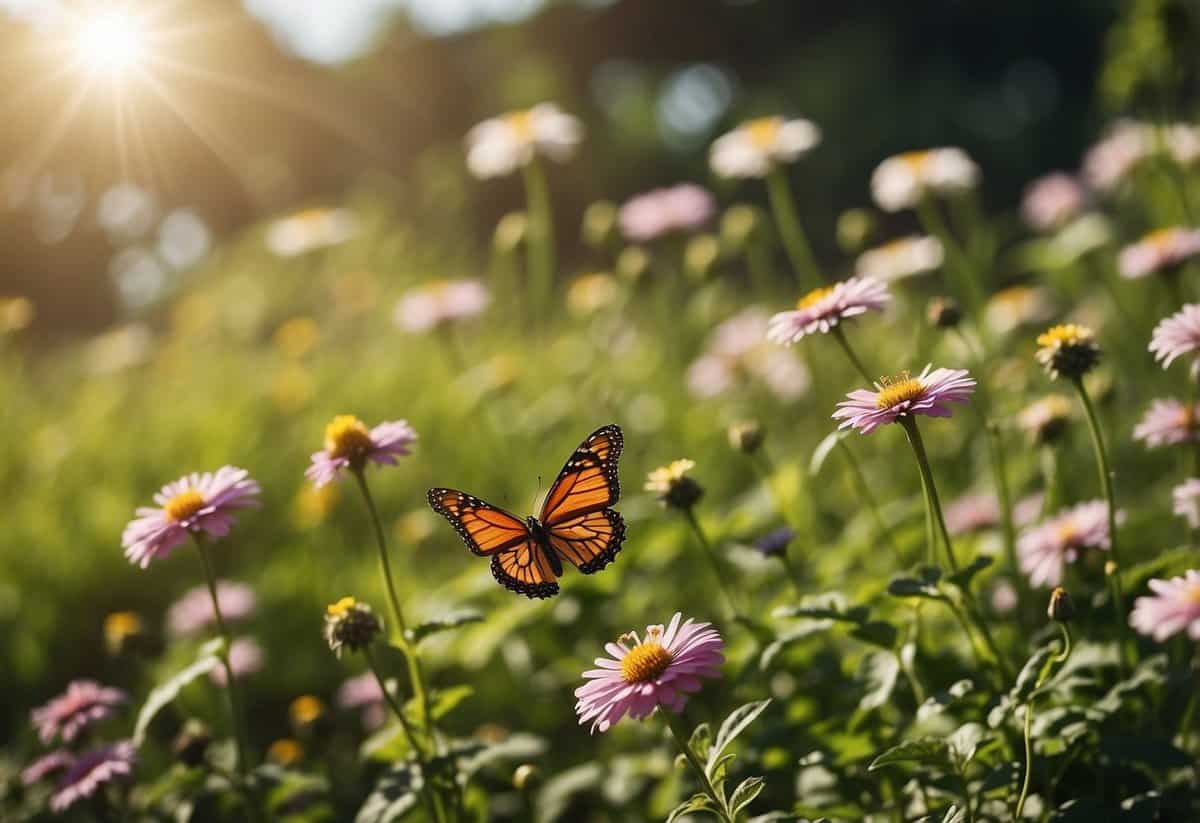
When you follow the right tips and guidelines, your plants will thrive even during the hottest part of the year. From watering schedules to protecting your plants from the sun, there are many simple ways to ensure your garden remains healthy and vibrant all month long.
1) Plant Sunflowers

Sunflowers are a great addition to any garden in July. Start by choosing a sunny spot with well-draining soil.
Plant your sunflower seeds about one inch deep and space them six to twelve inches apart. If you’re planting smaller varieties, you can plant them closer together.
Keep the soil moist until the seeds germinate, usually in about seven days. Once they sprout, water them regularly to help them grow strong and tall.
For more detailed instructions, check out this guide on growing sunflowers. Happy planting!
2) Prune Roses

Prune your roses in July to keep them healthy and blooming. Remove any dead branches and canes. This helps the plant focus on producing new growth and flowers.
Cut back to live wood, which is usually green. Make sure to prune broken or unhealthy branches to maintain the plant’s shape and health. Clip away any branches that cross through the center of the plant to improve airflow.
Make cuts at a 45-degree angle, about 1/4 inch above an outward-facing bud. This encourages new growth to spread outward. If you want more detailed guidance, check out this guide on pruning roses.
3) Add Mulch to Beds
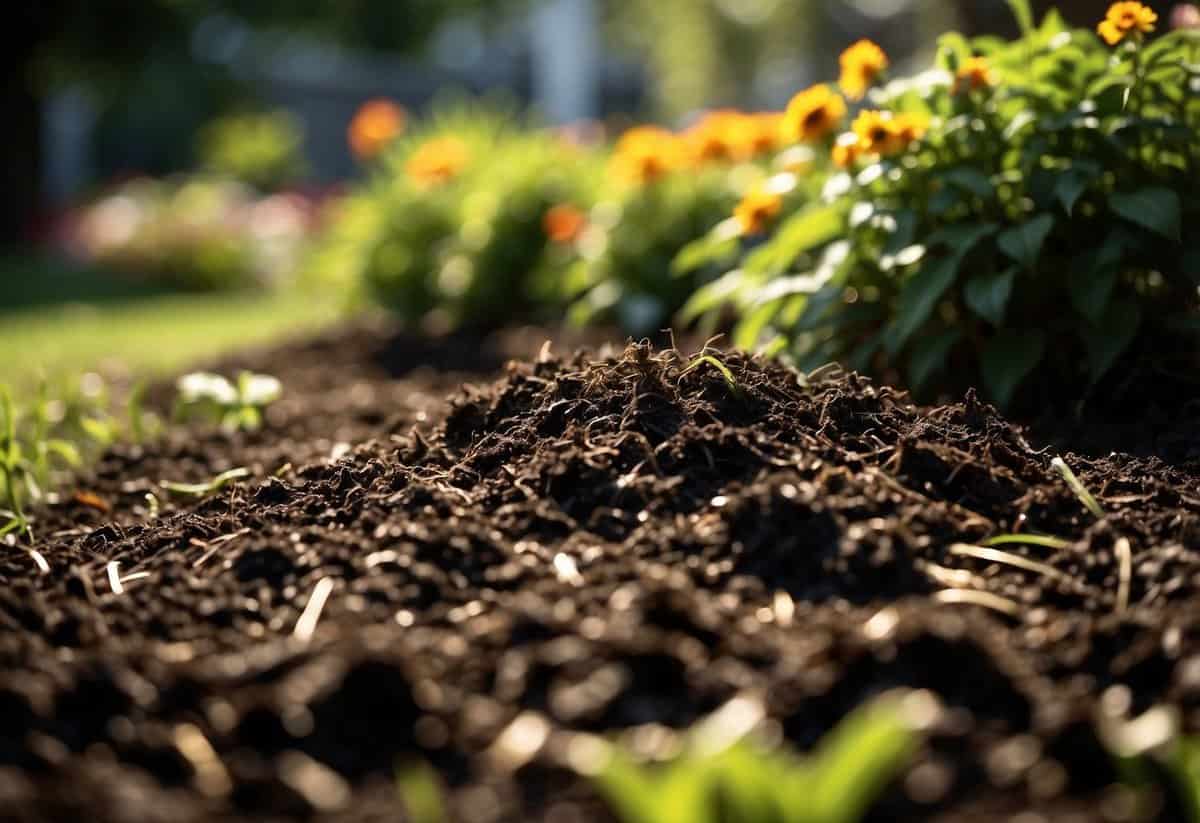
Adding mulch to your garden beds is a great way to keep your plants happy. Mulch helps lock in moisture, so you don’t need to water as much.
Choose a mulch that looks nice with your home. For example, brownish/red pine mulch goes well with brick houses.
Wait until your spring bulbs are up before you mulch. Spring is the ideal time to add mulch because it helps your beds look vibrant and blocks weeds.
4) Harvest Early Veggies

July is the perfect time to harvest early vegetables.
If you planted spring crops like radishes and peas, they are likely ready now.
Don’t forget to check your lettuce and spinach, which can bolt in the heat.
Keep an eye on your garden, and enjoy the fresh produce!
5) Water Early in the Morning
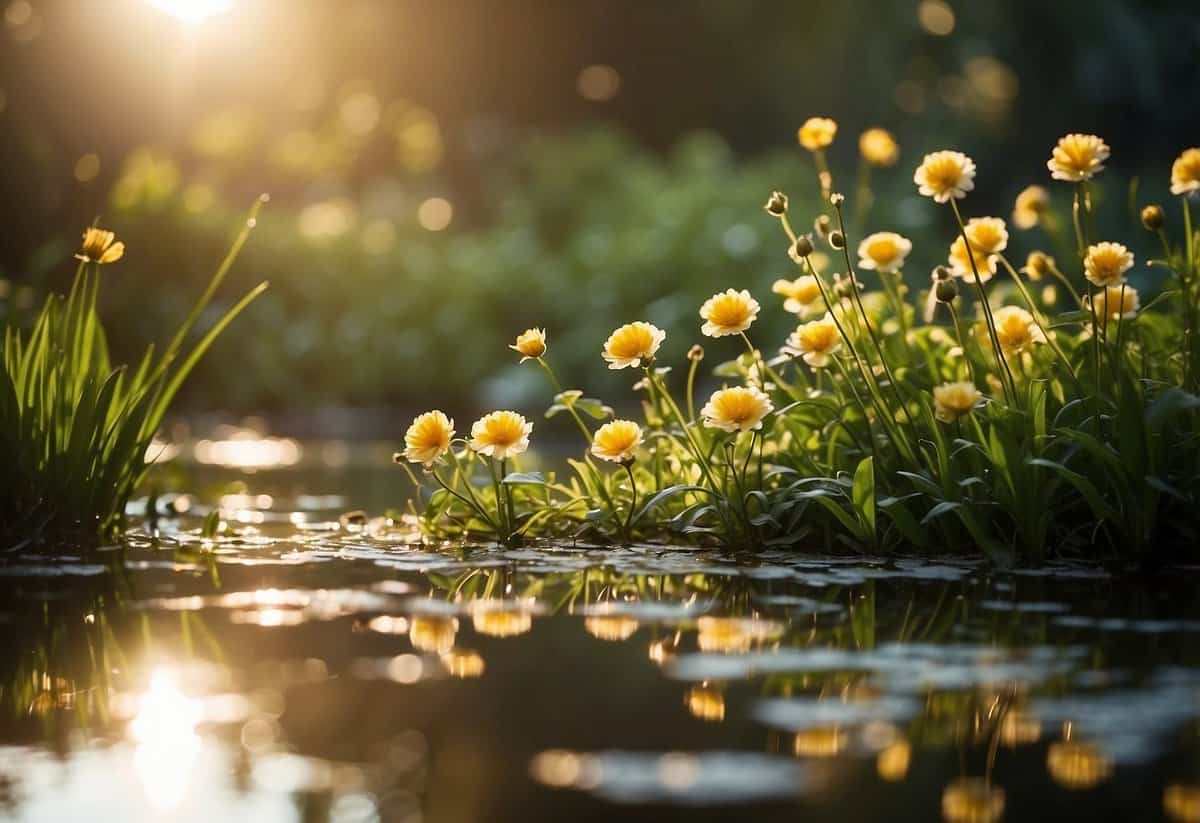
Watering your plants early in the morning is a great idea. During this time, temperatures are cooler, which helps water to soak into the soil without evaporating quickly.
Morning watering also allows plants to take up moisture before the hottest part of the day. This keeps them hydrated and resilient against the midday heat.
Cool mornings are also a perfect time to water container plants since it gives them plenty of time to absorb water thoroughly.
6) Deadhead Perennials

Deadheading perennials is a great way to keep your garden looking fresh. By removing spent flowers, you can encourage new blooms and keep plants healthy.
For example, salvia, peonies, and coral bells benefit from deadheading. Snip off the flowers that have finished blooming to promote more growth.
Regularly deadheading makes your garden vibrant and full of color. It helps plants focus on growing more flowers rather than producing seeds.
7) Start a Compost Pile

July is a great time to start a compost pile. Gather your kitchen scraps like apple cores, banana peels, and citrus rinds. Avoid adding meat, dairy, or oils.
Layer your compost with browns and greens. Start with dried leaves or twigs, followed by fruit and vegetable scraps. This helps everything break down better.
Turn your compost regularly to keep it aerated. This helps speed up the decomposition process and keeps your compost from smelling bad. If it starts to smell, add more browns like dried leaves or cardboard to balance it out.
For more detailed tips, check out Epic Gardening.
8) Feed Hanging Baskets

Hanging baskets need regular feeding to stay lush and beautiful. Use a balanced, water-soluble fertilizer every couple of weeks. This will provide essential nutrients.
Make sure to water the baskets thoroughly before feeding. This helps the plants absorb nutrients more effectively.
Don’t forget to check the label for the right amount of fertilizer to use. Overfeeding can harm your plants. For more tips, check out this guide on caring for hanging baskets.
9) Check for Pests
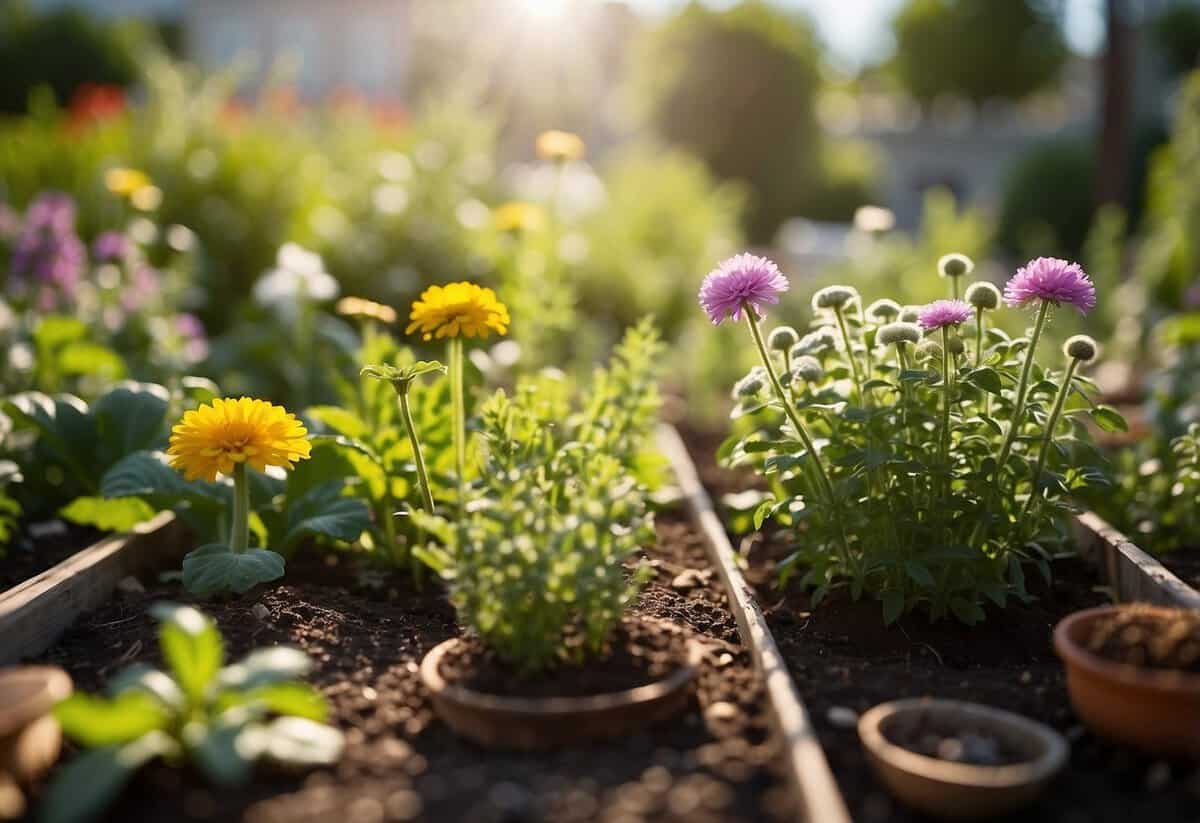
Pests can wreak havoc on your garden if not managed. Take time to inspect your plants regularly. Look under leaves, at the nodes, and around the soil for signs of pests like eggs, larvae, or waste.
Early detection is key. If you find pests, act quickly to remove them or use natural remedies to keep your plants healthy and thriving. Check out more tips for identifying and treating pests at Garden Pests Cheat Sheet.
10) Stake Tall Plants

When your plants start growing tall, they might need some help to stand up straight.
Take a stake and push it into the ground close to the plant, just an inch or two away.
Tie the plant gently to the stake with some natural twine or string, making sure it’s not too tight.
This will help the plant stay upright and avoid breaking in the wind.
Using multiple stakes can be useful for larger plants or groups of plants growing together.
This way, your garden stays neat and your plants stay safe.
Importance of Mulching

Mulching is crucial for maintaining healthy gardens, especially in the hot month of July. It helps retain soil moisture and suppresses weeds effectively.
Benefits for Moisture Retention
Mulching helps your garden in a big way by keeping the soil moist. With high summer temperatures, water evaporates quickly. When you apply a layer of straw, compost, or other organic materials, it traps moisture in the soil. This means you won’t have to water your plants as often.
Soil covered with mulch stays cooler. This protects roots from the heat, helping plants grow better. Plus, as the mulch breaks down, it adds nutrients to the soil. This makes your garden healthier over time. To learn more about mulching techniques, you can visit Garden Tips for July.
Weed Suppression Techniques
Mulching also plays a key role in keeping weeds at bay. Weeds compete with your plants for nutrients and water. A thick layer of mulch blocks sunlight from reaching weed seeds, stopping them from sprouting. This means fewer weeds and less work for you.
Different mulches work best in different conditions. Organic mulches like straw and compost are great for temperate regions because they retain moisture. In hotter climates, inorganic mulches like stone and gravel can be more effective as they reflect heat and stop water from evaporating. Check out more about the benefits of various mulches from Real Simple.
Pruning and Deadheading Tips

Pruning and deadheading help your garden stay healthy and look its best. These practices encourage new growth and prevent diseases.
Timing and Techniques
Pruning should be done at specific times for the best results. For instance, prune tomato plants early in the day to avoid heat stress. For perennials, remove faded blooms promptly to encourage a second flowering. Deadheading annuals like petunias and marigolds keeps them blooming.
When cutting back bushes like roses, make your cuts 1/4 inch above a leaf node facing outward. This encourages outward growth. Use clean, sharp tools to make precise cuts, preventing jagged edges that can invite disease.
Deadheading involves removing spent flowers. Snip the flower along with some stem. This method is ideal for plants like salvia and penstemon. Around mid-summer, deadhead plants that have finished blooming by June 30th.
Tools Needed for Pruning
Using the right tools makes pruning easier and more effective. Pruners or secateurs are essential for cutting small branches and stems. Choose bypass pruners for a clean cut, unlike anvil pruners which may crush the stem. Keep them sharpened for the best results.
Loppers are useful for thicker branches. They provide greater leverage, making it easier to cut through tougher wood. For very thick branches, a pruning saw is ideal.
Gloves are also important. They protect your hands from thorns and rough branches. Opt for gloves with a snug fit to maintain dexterity.
Having sterilizing wipes near your workspace reduces the spread of disease. Clean your tools between cuts, especially if you’re working on different plants.
Watering Strategies

In July, maintaining proper moisture levels in your garden is crucial for healthy plant growth. Careful scheduling and employing efficient methods can help achieve this. Here are some essential tips to get you started.
Ideal Watering Schedules
Plan to water your garden early in the morning.
This helps minimize water loss due to evaporation and ensures that plants have moisture throughout the day. If you can’t water in the morning, aim for early evening. Avoid watering midday when the sun is hottest.
Water deeply and less frequently.
This encourages the roots to grow deeper, making plants more drought-resistant. Established plants might need water once or twice a week, while newly planted ones might require more frequent watering. Keep an eye on soil moisture to guide your schedule.
Efficient Watering Methods
Drip irrigation systems are highly efficient.
They deliver water directly to the roots, reducing waste. Set them up under the soil or mulch for best results. This method is ideal for conserving water and keeping foliage dry, which helps prevent disease.
Consider using soaker hoses for even distribution.
Lay soaker hoses along garden beds to ensure thorough watering. They release water slowly and evenly, providing consistent moisture.
Use mulch to retain soil moisture.
A 2-3 inch layer of organic mulch around plants helps maintain humidity and reduce evaporation. It also adds nutrients to the soil as it decomposes, benefiting your garden overall.
Additional Tips
- Check containers twice daily: They dry out faster than garden beds, especially in temperatures above 90°F.
- Adjust frequency based on weather: More frequent watering may be necessary during heatwaves or dry spells.
Implementing these strategies will help keep your garden thriving through the hot summer months.
Organic Pest Control
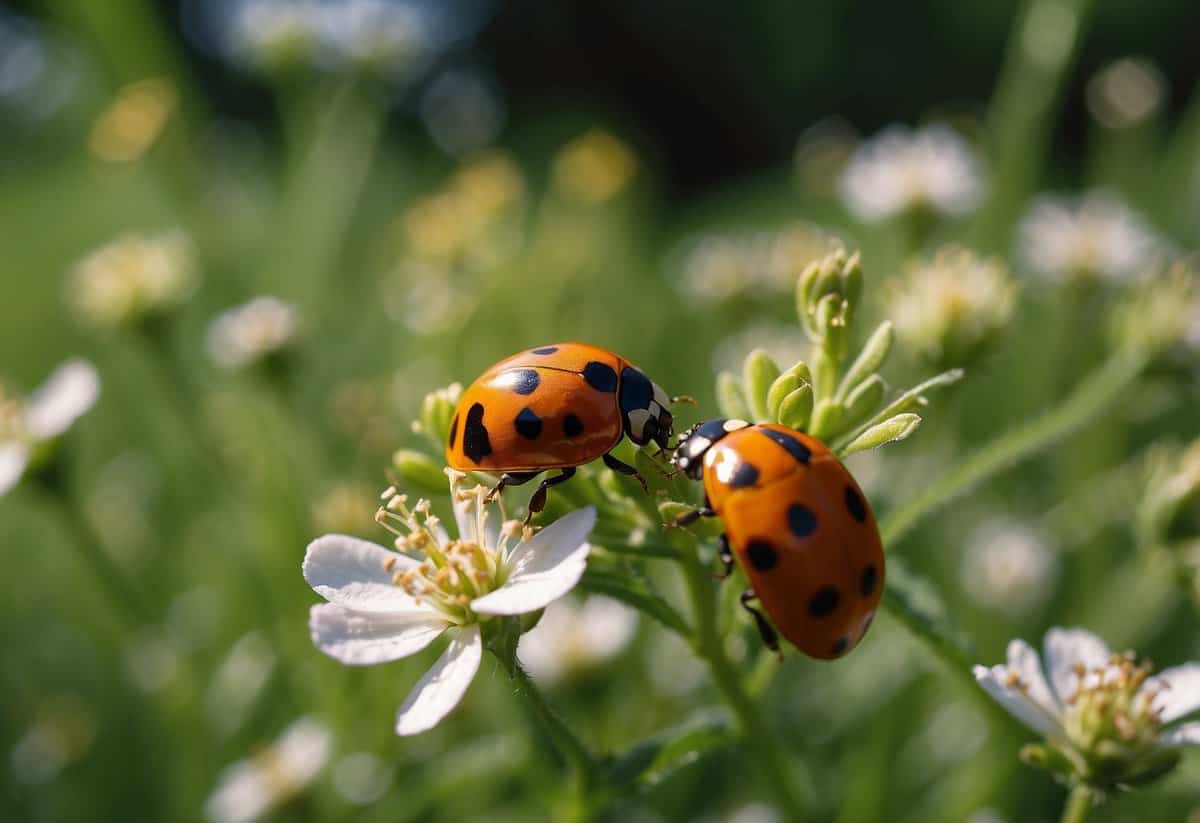
Using organic pest control methods helps protect your garden in a sustainable way. These methods include natural repellents and using beneficial insects to manage pests without harming the environment.
Natural Repellents
Natural repellents can keep pests away from your plants without using harmful chemicals. One effective method is using food-grade diatomaceous earth, which acts as a barrier against crawling insects like stinkbugs. Simply sprinkle it around the base of plants.
Another option is creating a garlic and pepper spray. Blend a bulb of garlic and a hot pepper, such as jalapeño or cayenne, with a quart of water. Strain the mixture and add a few drops of mild liquid dish soap. This spray is great for deterring aphids, caterpillars, and beetles from munching on your garden plants.
Handpicking pests off your plants is another simple and effective technique. Regularly inspect your garden and remove insects by hand. Use a small paintbrush dipped in methylated spirits for stubborn pests like scale insects and mealybugs.
Beneficial Insects
Recruiting beneficial insects to your garden can naturally reduce pest populations. Ladybugs, for instance, eat aphids, while lacewings consume various soft-bodied pests. You can buy these helpful insects online or at garden centers.
Another beneficial insect is the parasitic wasp. These tiny wasps lay their eggs inside pests like caterpillars, which eventually kills the pests. Introducing these wasps into your garden can help control unwanted insect populations.
Planting flowers like marigolds, cosmos, and dill can attract beneficial insects. These plants provide nectar and pollen, making your garden an inviting place for insects that prey on pests. By encouraging these natural predators, you can reduce the need for chemical pesticides and keep your garden healthy.







